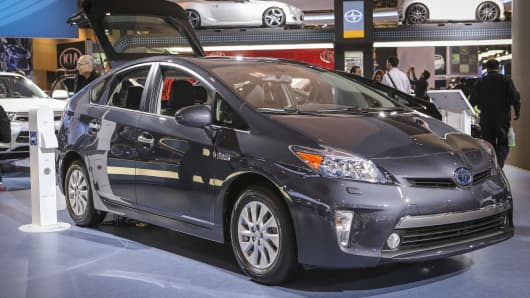Forthcoming fuel-efficiency standards may do more than ease drivers' pain at the pump. They could result in a dramatically different look for your next new car.
Under the corporate average fuel economy (aka CAFE) standards approved last August, automakers' 2,025 fleets must average 54.5 miles per gallon—which would make them nearly twice as fuel efficient as currently required. Those standards and other previously approved rules mandate smaller improvements in the interim.
Increasing fuel efficiency so substantially requires automakers to get more creative than simply introducing more hybrid or electric models. Design experts say future models could include lighter materials, more aerodynamic shapes or more powerful engines. Or all of the above.
(Read more: America is losing its gag-guzzling ways)
"You've got one goal, to increase efficiency, and a variety of ways to get there. It's usually not just one thing," said Jason Hill, president of vehicle design studio Eleven and an instructor of transportation design at the Art Center College of Design in Pasadena, Calif.
Some of the changes drivers might encounter:






